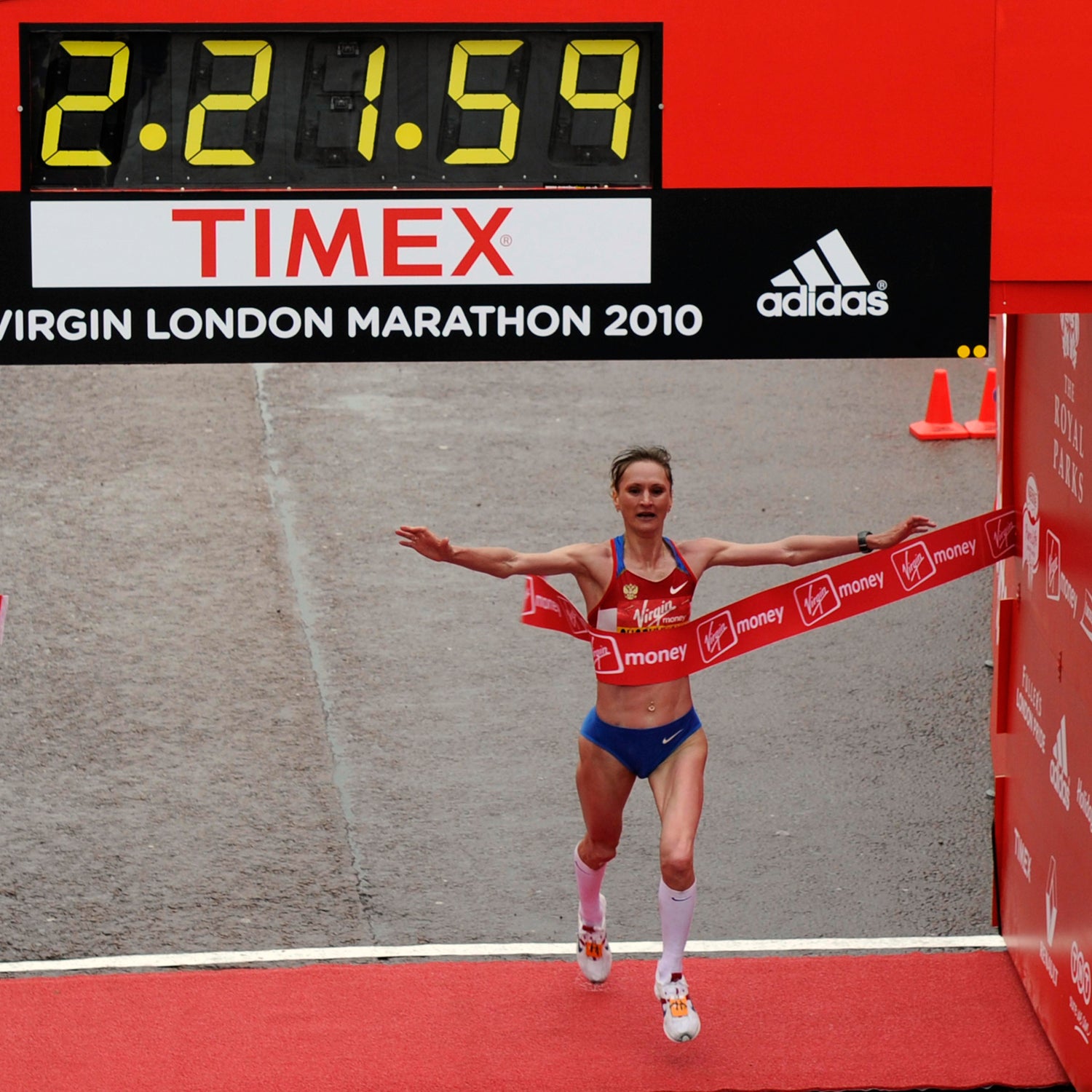Twelve days ago, crusading German journalist Hajo Seppelt broke news of a widespread doping conspiracy in Russian long-distance running. Seppelt obtained recordings of two world-champion runners allegedly confessing to doping on tape, and published further allegations that one of those runners, former dominant marathoner Lilia Shobukhova, had paid a bribe of $600,000 to keep an adverse biological passport finding from making it’s way to the IAAF, track and field’s international governing body.
According to Seppelt’s report, IAAF treasurer facilitated the payment. Last week, the BBC reported another allegation from Seppelt's investigation: that the IAAF may have belonging to Russian, Kenyan, German, Moroccan, British, and Spanish athletes. And on Wednesday, Papa Massaa Diack, IAAF President Lamine Diack’s son and a marketing advisor for the organization, resigned from the IAAF after suggesting he had solicited a bribe of $5 million to bring the World Championships to Qatar in 2017. Balakhnichev also agreed to step down last week.
It’s not much of a revelation that Russian runners dope; there have been bigger scandals involving prominent Russian runners, including one that . Doping appears so widespread among Russian women on the basis of positive tests alone that few people were surprised when Shobukhova’s ban was announced last spring; her agent, Andrey Baranov, has also represented marathoners who have tested positive.
A corrupt organization makes the entire sport a charade. Nothing—not even the testing—matters when the people administering the tests are corrupt.
But the allegation of corruption at the IAAF is much more worrisome because it exposes a critical flaw in how running, and Olympic-movement sports in general, operate. In cycling, running, triathlon, skiing, and other sports, the organizations that are primarily responsible for drug testing are also in charge of promoting their sports. It’s a conflict of interest that practically ensures corruption, and a corrupt organization makes the entire sport a charade. Nothing—not even the testing—matters when the people administering the tests are corrupt.
“It's clear that cycling, athletics, swimming, tennis and soccer have major problems and are ruled by governing bodies in denial,” former WADA head Dick Pound . , whose lab at UCLA has tested athletes for PEDs for decades, says corruption at in international federations is endemic. “You don’t get to be the head of the IAAF on the basis of merit,” he told me. “You get the on the basis of—who knows what they do.”
The problem is not new. In the 1980s, the U.S. Olympic Committee, which was then in charge of drug testing for track, looked the other way when . Wade Exum, who used to head the USOC's drug testing program (the USOC no longer is involved in anti-doping testing), .
More recently, in 2009, cycling’s international governing body, the UCI, , and it likely accepted a bribe to paper overĚý in 2001.
When a marquee athlete tests positive, many international sports organizations may find themselves in the unenviable position of destroying the career of a world-famous athlete. Or, in Russia's case, an athlete critical to the country's identity.
To understand why international governing bodies face such a devastating conflict of interest, it helps to know a bit about the nuts and bolts of the anti-doping bureaucracy. The most prominent and perhaps the most credible agency in the PED universe, the World Anti-Doping Agency, actually does very little testing. Instead, it decides which drugs and supplements are banned, and it helps standardize testing rules among sports and countries. On-the-ground testing falls to a number of smaller organizations.
Most often athletes are tested by a sport’s international governing body, like running’s IAAF; a country’s own doping agency, like the United States Anti-Doping Agency; or even a major race organization. But the phrase “tested by” is euphemistic. Most organizations rely on third-party contractors, both to collect samples and analyze samples in the lab. USADA employs its own sample collectors, and its contracted drug labs to both WADA, the U.S. Olympic Committee, and USADA—which makes corrupting the process relatively difficult.* But not all governing bodies have the same requirement. If an athlete tested by the IAFF returns a positive result, only the IAAF is notified,Ěýaccording to Rule 36 of the organization’s competition rules,Ěýpotentially giving the organization an opportunity to cover up the result. An IAAF spokesman had not responded to şÚÁĎłÔąĎÍř’s request for an interview at the time of publication.
In general, the system works well when the agency paying for the test is independent. USADA tests many American athletes, and though it receives most of it’s funding from Congress, it operates without government oversight. “We know that it’s difficult, if not impossible, to both police and promote your own sport,” USADA spokesperson Annie Skinner told me. “We’re here solely to protect the rights of clean athletes and protect the integrity of sport.”
When a marquee athlete tests positive, many international sports organizations—the UCI, the IAAF, the International Triathlon Union—may find themselves in the unenviable position of destroying the career of a world-famous athlete. Or, in Russia’s case, an athlete critical to the country’s identity. Until Seppelt’s report, the IAAF's conflict of interest had been largely theoretical. I was not aware of suspicions that the IAAF accepted money to make doping positives go away, and the organization had shown integrity by banning a number of big-name athletes in the past several years.
The IAAF’s current role in anti doping can’t be overstated. Most countries, including Ethiopia and Kenya, cannot afford an independent anti-doping agency. So they depend entirely on IAAF to oversee testing. (Because USADA is well funded and independent, IAAF only occasionally tests American runners away from competitions.) An allegation of corruption in the IAAF, then, means that the one agency keeping an eye on the world’s best runners has now lost its claim to independence and integrity.Ěý
In that sense, governance has clearly superseded testing as the biggest threat to a level playing field in Olympic-movement sports. Earlier this week, Sebastian Coe, a favorite to become IAAF president next year, —a USADA for the world. WADA, which announced an investigation into Russia’s athletics federation and the IAAF on Thursday, would be the obvious choice to lead that effort, but Catlin isn’t optimistic.
“That would fix it, but that’s not likely to happen,” he said, noting the agency’s funding shortfalls. “WADA can hardly keep up with it’s own problems, let alone take these things on.”
*This sentence was modified to explain that USADA does not contract out its sample collections.Ěý


